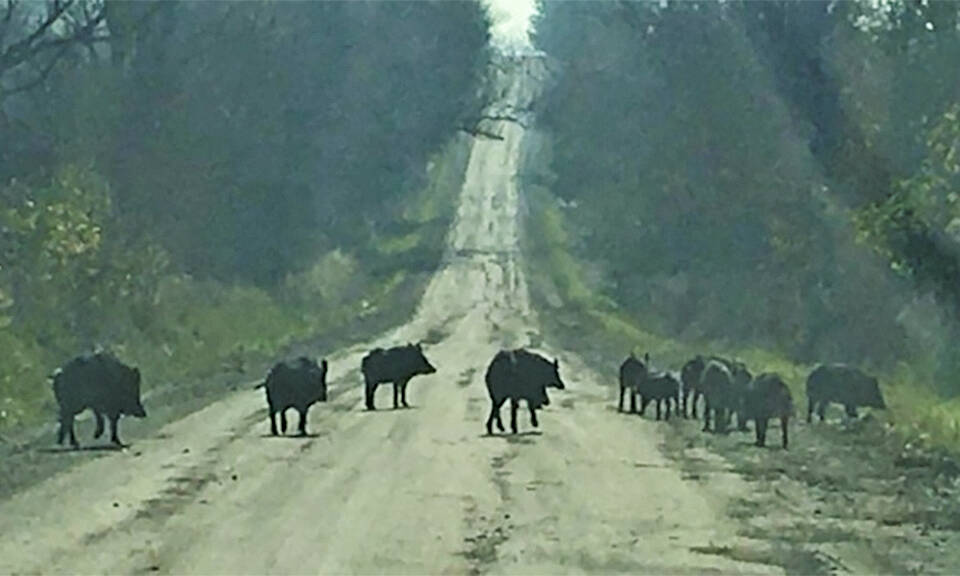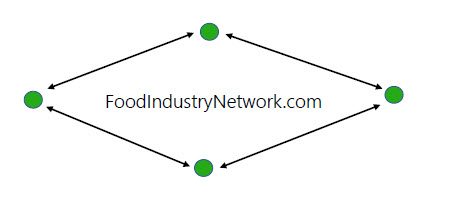Number of confirmed wild boar drops in 2023-2024

The number of Eurasian wild boar confirmed to be in Ontario has declined since identification and removal efforts were stepped up three years ago, according to the Ministry of Natural Resources’ most recent report on invasive wild pigs.
Read Also


Moving past climate polarization
Carbon and greenhouse gases are certainly important, and should be an element of the conversation. But focusing on landscape improvement might be a more effective — if indirect — means of accomplishing a significant portion of what we’ve thus far failed to achieve.
Why it matters: The Eurasian wild boar is an invasive species in Ontario. Established populations can be very damaging to crops, wildlife, and increase the risk of diseases, such as African Swine Fever, for Ontario’s hog sector.
Continued monitoring is required, however, to prevent breeding populations from establishing in the province, as they have across parts of the Canadian Prairies and the United States.
Reports of wild boar are the main means by which the province gathers data and pursues the problem invasive species. Information is gathered via a public reporting system – anyone can email [email protected], or call 1-833-933-2355 if they suspect a wild boar could be present in a given area – and through collaboration with the Ontario Federation of Anglers and Hunters’ wild pig surveillance program.
Wild pig sightings are sorted into four categories: domesticated pigs, pot-bellied pigs, Eurasian wild boar, and unknown (when the pig type cannot be verified). Between Apr. 1, 2023 and Mar. 31, 2024, the ministry conducted investigations at 35 unique sites across Ontario, the same number of sites investigated during the 2022-23 period.
A total of 109 reports were received, 87 of which were determined to be “unique moderate or high confidence wild pig sightings.”
Unknown pig type comprised 43 per cent of reported sightings. Domesticated pigs made up 30 per cent of the total sightings, and pot-bellied pigs the remaining 28 per cent. Lone animals made up 48 per cent of the sightings, while 39 per cent involved more than one animal. Three per cent were only reported after being found dead. Nine per cent of the reports were in the highest risk category – multiple pigs with young.
Overall, most animals were assessed to be escapes from enclosures, rather than from existing wild or feral populations. No Eurasian wild boar were confirmed during the 2023-24 reporting period. Three per cent of sightings were confirmed to be Eurasian wild boar in 2022-23.
Control policy
Ontario introduced its strategy to contain and reduce the threat posed by Eurasian wild boar in October 2021. The strategy contains elements designed to improve on failed control efforts enacted in other parts of North America.
Hunting Eurasian boar, for example, is prohibited. This is because hunting allowances elsewhere have been shown to change the animals’ behaviour. Boar become more reclusive if hunted and become harder to identify, enabling them to breed and proliferate faster.
The Ontario Federation of Anglers and Hunters reports studies from the United States that show 70 per cent of a wild pig population has to be killed just to keep it from growing. This number is “rarely if ever achieved.”
There have been other complications, too. As detailed by Ontario’s boar control strategy, some jurisdictions where hunting seasons were introduced as a management approach created an incentive for “the intentional release of wild pigs into new areas to create additional recreational hunting opportunities, significantly (accelerating) population expansion. Other jurisdictions, such as New York, have reduced or eliminated the spread of wild pigs by, in part, banning wild pig hunting.”
Ontario’s agricultural community also continues to advocate vigilance regarding Eurasian boar. The Ontario Federation of Agriculture participated in the consultation period prior to the establishment of the province’s wild pig management strategy, recommending the prohibition of hunting for the reasons articulated previously.
In an email statement, the Federation reiterated an established population of wild invasive pigs poses “a significant risk to the pork industry, and can devastate crops, animals, native wildlife and farmer livelihoods.”
Source: Farmtario.com

